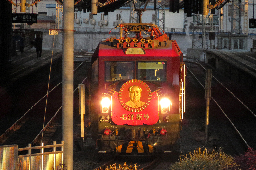You all do realize that suburbs existed before the invention of the car right? American infrastructure is bad but it’s not irredeemable, the assumption that we can’t provide public transportation to these places because of a lack of resources is malthusian. And sure some places like the American Southwest and Florida are legitimately over human population carrying capacity due to climate change but in general the earth as a whole isn’t, and cities like Amsterdam are just as unsustainable as Miami since even though has one of those le epic reddit notjustbikes cityskylines approved infrastructure, both are below the sea level.
I think in general our message should be abolish the need to own the automobile, any measures meant to limit car use should target the rich before the poor. And that trains are good, and that a high speed train across the United States would be a rather popular project in the eyes of even the chuds. And by god stop calling for the suburbs to be razed, stop trying to be zoomer Robert Moses.

Does any part of your plan involve forced relocation of people living in the suburbs?
Have you ever seen a single person seriously advocate for that?
relocate me plz
Yes. I was actually involved in that. Back then when I wasn’t political where I am now I was part of a group that in a real existing capitalist liberal city made it so that around 20 family homes were destroyed and a new road/expressway was put through. Of course we had a bit support by the governing parties and the police, but none the less that was a forced relocation.
Lets not act as if those aren’t accepted in our current system daily.
It’s worth noting that the current system does involve tons of forced relocation. Just because that relocation is often economic or based on the random whims of developers or the construction of even dumber stroads doesn’t mean it isn’t extremely prevalent. The US’ national highway system destroyed half a million homes and displaced well over a million people.
There are a number of things you can do to cut sprawl in a matter of years to decades. Surely many people will willingly relocate to a more sensible and pleasant neighbourhood, but naturally some people will be stubborn and want to remain. We have plenty of options for how to handle entire neighbourhoods and towns of people who would want to remain in place. Redoing layouts of streets, banning the sale or building of new suburban homes, banning suburb rebuilds, mandating housing formats for new constructions, retiring and rewilding/reusing areas, and densifying spaces are a few examples I will quickly explain which will require minimal or no forced relocation:
Lots of suburban streets are ridiculously twisty and houses often have significant road setback distances. By reorganizing your roads into more sensible layouts and cutting into those setbacks with the right-of-way easements, you can de-spaghettify many areas. If people are willing to sell or move, you can even run roads through existing houses’ locations to reconnect cul-de-sacs and other dead ends.
You can prevent new construction of mcmansion subdivisions by simply banning them. Simple as, if we’re not allowed to relocate people from suburbs, they’re not allowed to relocate themselves to suburbs. You could even ban people from moving into them if you wanted, and just let the suburbs slowly wither.
You could even ban people from moving into them if you wanted, and just let the suburbs slowly wither.
As climate change becomes more rapid, more homes are destroyed by wildfires, tornadoes, hurricanes, and other disasters. Doing a managed retreat from the suburbs and preventing these destroyed homes from being rebuilt is an option. A more pragmatic solution would be to use the now-vacant space to build denser cities or more sensible neighbourhood layouts.
Regulating new construction to prevent suburban single-family homes or winding layouts is an entirely sensible solution. When new developments are built, they need to stick to your guidelines and not sprawl.
You can retire areas to gradually allow people to leave without new people moving in. This will take longer, but the process involved allows people to choose to move out or live their lives in their home, but when they do leave or pass away, the home isn’t transferable to anyone else. When they’re gone, the house is destroyed and the land is rewilded or repurposed for whatever the new use of the space will be.
Densifying existing spaces is another option. Building new and larger constructions closer to existing homes is possible. Your home will stay in place, you won’t move, and you’ll be in a newer, denser neighbourhood.
You won’t move out, okay. We’ll do what needs to be done around you, no problem. Nail houses exist elsewhere, no reason they can’t exist in north america.